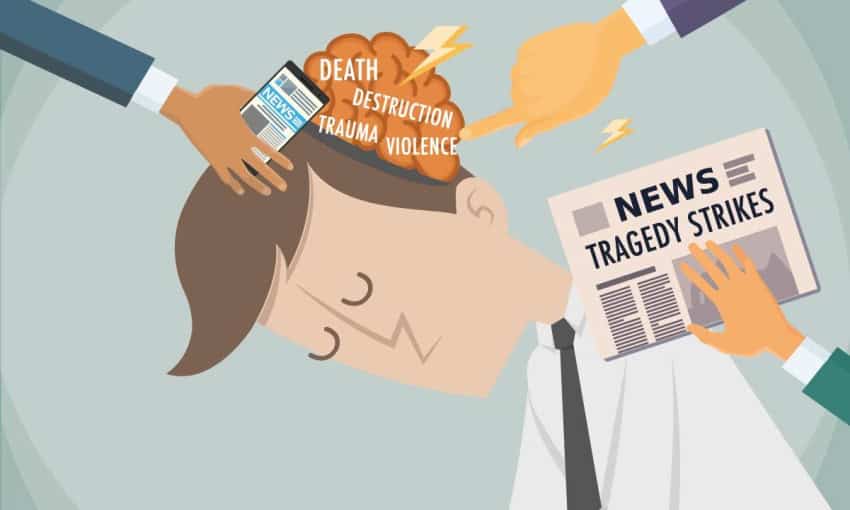ISLAMABAD – The early morning hours at the psychiatry ward of Islamabad’s private hospital shows silence and peace amid the presence of ten patients and their attendants. Right in the corner lies a tall and a tired woman on her bed, she looks as if she is in some discomfort and keeps turning over. In her late twenties, Saeeda* came here a week ago. Wearing a yellow dress and a white dupatta, hanging from the bed her condition shows she remained sleepless for many days.
Saeeda, 28, a working mother is one of the estimated 322 million people globally facing depressive disorders according to World Health Organization (WHO).
“Being a working woman along with child rearing and domestic issues she suddenly lost her consciousness,” her brother says.
More than 300 million people are now living with depression, which is the leading cause of ill health and disability worldwide, according to the latest estimates from the WHO released ahead of World Health Day (April 7) with the theme “Depression Let’s Talk”. The argument is necessary because WHO says depression is expected to be the second largest cause of burden of disease by 2020.

Worldwide cases of depression, however, have increased to almost 20% in a decade making it the main cause of disability. “These new figures are a wake-up call for all countries to rethink their approaches to mental health and to treat it with the urgency that it deserves,” WHO Chief Margaret Chan said.
According to United Nations health agency’s definition, depression is a “persistent sadness and a loss of interest in activities that people normally enjoy, accompanied by an inability to carry out daily activities for two weeks or more”.
Misconceptions about depression
Saeeda belongs to a far-flung village in northern Punjab, Pakistan and her brother says that the majority of her family women had linked her sickness with the traditional belief of being occupied by a demon.
But unlike the majority of other Pakistani people who routinely turn to faith healers to cure various health problems Saeeda’s brother brought her to Islamabad’s hospital for treatment.
“She is getting better now; her illness has been linked to traditional postpartum depression affects of delivery by some women. While doctor linked it to severe depression she is on permanent medication after three electroconvulsive therapy (ECT) shocks,” her brother told.

Mental health has now been included in the UN Sustainable Development Goals (SDGs). The inclusion of mental health in SDGs has a positive impact on population and countries where millions suffer from mental illness and need help.
“Depression is a mostly inherited disorder but in the current times it is more linked to environmental conditions and stressful life. About 10-15% of people suffering from depression commits suicide,” says world-renowned psychiatrist, Dr Ahsan ul Haq Chishti.
WHO estimated that almost 18,000 people in Pakistan commit suicide annually while the number of suicide attempts is almost four times greater than these figures.
Dr Chishti, who is a Lahore based psychiatrist heading RECOVERY, an addiction treatment and psychiatric rehab center, linked it with lack of awareness and believes that, “Unfortunately depression and mental illness in Pakistan are often linked to black magic in which people consult traditional faith healers and suffer more.”
“There are about 800,000 suicides worldwide every year, amounting to one every four seconds. And the link to depression is clear,” says Shekhar Saxena, Director of the Department of Mental Health and Substance Abuse at WHO.
This year’s theme will bring depression issue at the policy level through awareness campaigns and seminars. People of almost all ages are vulnerable to depression. According to Shahzad Alam Khan, — National Professional Officer at WHO Islamabad, “8.5% of Pakistan’s population is suffering from anxiety and depression, whereas 4.3% of population suffers from depression alone.”
“Violence, conflict and unrest in the WHO’s Eastern Mediterranean Region comprising 22 Muslim majority countries including Pakistan is very common where one in five persons are affected by depression and anxiety,” Shahzad Alam Khan, informed.

Suicide prevalence in Pakistan WHO believes is 9.3 people per 100,000 persons whereas conflicts, militancy and bomb blasts can drastically increase depression by 2-3 times among the victims and overall population with severe Post Traumatic Stress Disorder (PTSD).
“Depression is a very common disease and increasing with a rapid pace in Pakistan amid various social issues primarily patients with relationship issues, unemployment and examination performance issues are nowadays consulting with psychiatrists across various cities in Pakistan,” says Dr Rizwan Taj, Professor of psychiatry at Pakistan Institute of Medical Sciences Islamabad.
Dr, Taj also linked the psychological issues in Pakistan with the growing militancy and suicide bombings over the past decade. “Bomb blast victims often consult with highly PTSD in which the terrorism victims never forget about such incidents and think that it may repeat with them.”
Terrorism and its profound impact on mental health
Inside psychiatric unit in Rawalpindi, a garrison city, everything was going normally when I suddenly heard the strong screams and shouts and after rushing towards the room I found a middle-aged man with the grown beard was standing without a shirt at the corner angry and also frightened. He did not reply any of the questions but he seemed seriously suffering from PTSD.
Besides the actual causalities on the war on terror, there are numerous victims who have suffered invisible wounds from the conflicts which killed more than 50,000 people in Pakistan since 2001. These facts, however, are predominantly associated with casualties and economic losses whereas the psychological impact of violent events has been largely ignored.

Causalities, injuries and statistics are shaping the value and cost of the war in Pakistan and psychological impacts are only rarely reported. Reporters, rescue workers, emergency staff and witnesses are connected with the trauma but are largely ignored.
It was the evening of 10, January 2013 when Babul Khan, a volunteer rescue worker from the southwestern city of Quetta’s Edhi Foundation just got free from rescuing injured people in a bomb blast when the second suicide bomber exploded himself up in the evening at Alamdar road.
“I was very close to the ambulance which the suicide bomber used it to reach the place. The explosion was so powerful that I lost hearing from my right ear beside severe head injuries. I still can feel that huge sound and it left severe mental issues on me.
What happened on that day still haunts the 37-year long rescue worker. “I can’t hear any calls from my right ear as it creates itching pains and causing headaches and dizziness,” He said.

Risking them to save lives of the others these volunteer rescue workers are only paid Rs 7,000 ($70) a month with rescue efforts anytime and in a country where war is continuous and has no timing.

“The psychological aspects of terrorism are not been studied in Pakistan and there are no proper figures about trauma faced by terrorism victims. PTSD patients are highly suffering from anxiety, emotional numbness and appetite changes, people largely now consider violent events as routine now and become familiar with such news about violence in Pakistan. The victims are not consulting to psychiatrists which certainly is harming their mental health.” Said Ayesha Irshad Mian — chairperson of the department of psychiatry at the Aga Khan University Karachi.
Dearth of psychiatrists
There are only 400 psychiatrists available in Pakistan — for the population of more than 200 million people country creating a huge treatment gap. Recently, WHO launched a mental health gap action program (mhGAP) it will call for improving political commitments and help develop policies, and legislative infrastructure, to provide integrated health care.
Postpartum Depression (PPD) another aspect of depression primarily related to childbirth is affecting both males and females. However, women are more prone to PPD in which hormonal change has been the contributing factor causing PPD and leading to anxiety about parenthood and caring for an infant.
Depression – An urban problem?
“Depression is more related to socio-economic factors and women are more vulnerable to depression. Gender, however, is a structural determinant of mental health and mental illness around 60% victims of depression and anxiety are women due to one or more factors including hormonal disturbances, domestic violence, rapid urbanisation, population and family size among lowest socioeconomic groups”. Says, Dr Uzma Ambreen, consultant psychiatrist at Pakistan Association of Mental Health.
“People who experienced trauma anytime during their childhood are more prone to depression. Women and children represent 80% of the 50 Million people affected by conflicts, disasters and displacement. In Pakistan, people in the southern port city of Karachi are facing violence and terrorism on a routine basis and PTSD patients are rising,” she told.

The systematic data is missing in Pakistan due to lack of research in Pakistan. Depression and stress are linked with socioeconomic indicators. Rapid growth in population and urbanisation are enormously adding stress in people’s lives. Access to social determinates in big cities like water, education; electricity and pollution are determinants making population stressful.
“Mental health and beating the stigma around the issue is a challenge that needs global attention. Depression itself is the leading cause of disability and I’m glad that the World Health Organization has driven the conversation around World Health Day”. Says Dr Sania Nishtar, Nominee for Director-General, WHO.
“In 2003, I brought experts across the country together to develop the National Action Plan on non-communicable disease prevention, control and health promotion in Pakistan (the first integrated NCD plan in the developing world): mental health was integrated into the framework. There’s still more to be in Pakistan and across the world but I’m glad that we’re talking about the issue. Breaking down the stigma about discussing depression is the first step to tackling it”. Dr Nishtar told.
“Larger portion of the population in big cities are more prone to depression due to urbanisation and less provision of services and resources from the state where millions living in a single city. Larger family sizes, and repeated pregnancies are causing huge pressure on both spouses leading to domestic violence, mental health issues and peer pressure for the children”. Says, Seemin Ashfaq, senior director communications Population Council.
Depression among the students is an international issue and it has been rapidly increasing in Pakistan as the rate of suicides and its attempts are getting higher. Depression is the leading cause of morbidity and it affects the performance of the students. The cohort suicide among the youth of 16-30 years is alarming and calls for the policy makers to introduce active mental health policy.

A number of students in Islamabad, Lahore and Karachi talked about stories of depression, self-harm, anxiety, stress and suicidal thoughts. They did not directly share studies might be difficult for them.
One anonymous student from Islamabad says, “My depression and anxiety started before joining the university, leaving home you know, and staying away in an extremely onerous social environment with the huge academic pressure all remain toll on me”.
Students expressed their concerns about no counselling services or discussing mental health issues with teachers. If such facilities could be provided at least they can share problems with them freely.
Another student informed that, “Everyone was blaming my performance and I also consider it my fault and thought I deserved it. I was shy of facing people soon after my result and I still miss social life and extracurricular activities due to fear and depression about my performance”.
Noman Riaz-Ul Hassan, a cancer survivor and motivational speaker belives that, “Depression is a silent illness which impacts and devastates not only the patients, and their immediate families but also our society at large. Traditional triggers to depression such as financial hardships, family issues, health issues and health conditions are well known though not adequately treated in our society. Over past almost decade or so, security and terrorism have also become key contributors to depression and PTSD. We need to invest in developing and providing counseling specifically to the victim’s and survivor’s families of such incidents and broadly to the public”.
Saxena pointed to studies showing that 70-80% of people who kill themselves in high-income countries, and around half of those in low-income countries, suffer from mental disorders, of which depression is the most common.














